A Sublime Road Trip Through the Heart of the Midwest
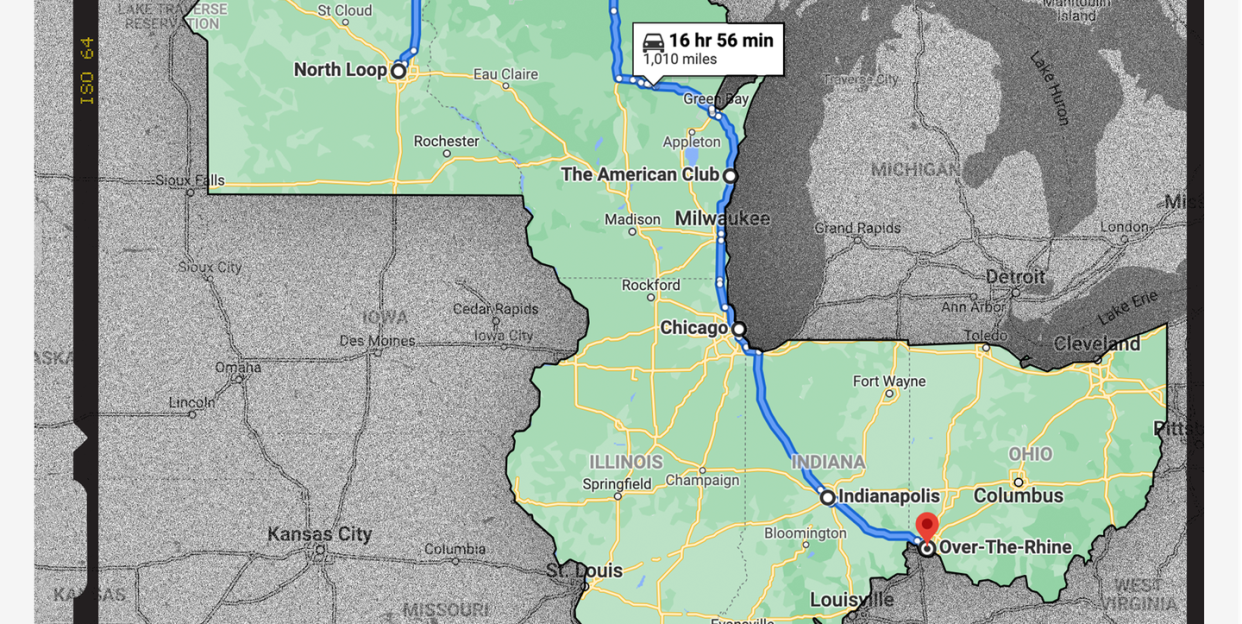
Distance: 1000 Miles
Time: Ten Days; 17 hours of driving
For many coastal Americans, the Midwest has been relegated to “flyover” status, but the region rewards those who choose to drive between the bright lights of the Eastern Seaboard and the rugged mountains of the West. A vast expanse of lakes and plains lies within; tracts of land cleared by ancient glaciers and worshipped by the original inhabitants. Today, the hem that cinches the gap between the North and South—from Kentucky all the way to the border waters of Canada—sews together a vibrant patchwork of surprisingly cosmopolitan cities. Make your way from Cincy to Twincy (Cincinnati to the Twin Cities in Minnesota) by car, and you’ll soon understand why the flyover states should be renamed the drive-throughs.
01
The Over-the-Rhine Neighborhood
Cincinnati, Ohio
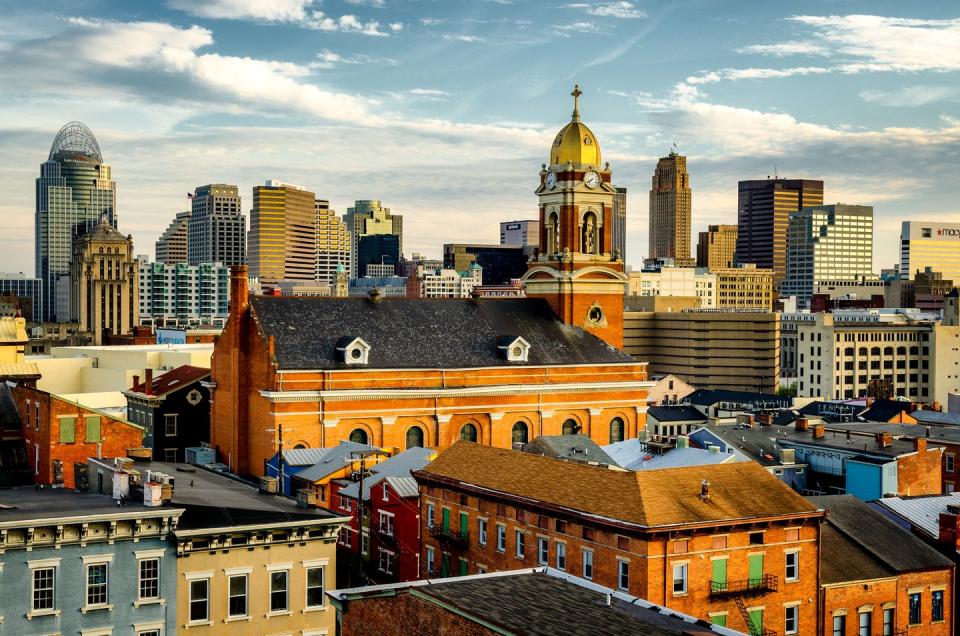
Brooklyn wishes it were as cool as the under-the-radar Over-the-Rhine: Cincy’s conglomeration of chic supper spots, home furnishing boutiques, and Euro-style carriage houses all set along cobbled streets and alleys. The neighborhood, just north of the city’s riverside downtown, has had many lives (a haven for German immigrants, a predominantly African-American area) before its current incarnation as the Midwest’s main locus of hipsterdom and one of densest clusters of top-notch restaurants in the US.
A ideal weekend in OTR, as it’s known, would include dinner at Losanti—where perfect steaks are prepared on the char grill (without the stodgy steakhouse vibes)—and Pepp & Delores—where homemade pastas and a killed espresso martini meets doting, old-fashioned hospitality. Afterward, hit up Somerset, a new edition to Cincy’s club scene that feels like a secret Balinese garden with rambling foliage and colorful walls covered in shelved books. Beware: the tiki cocktails are lethal.
Breakfast bites at Brown Bear Bakery are a must; locals order online, then walk over to claim their pastries before the favorites, like the triple-chocolate brioche and the “everything bagel” croissant, run out. And before you drive out of town, cure your hangover with a soothing bowl of pho at Pho Lang Thang directly across from bustling Findlay Market. Locally sourced beef and hand-cut noodles blend perfectly with the owners’ proprietary recipes of aromatic herbs—a family heirloom from Vietnam.
With construction continuing to transform the community, it’s smartest to stay just beyond in the fray in the fresh, pared back rooms at the 21c Cincinnati, located a few blocks south of OTR in the city’s downtown.
02
The Monon Trail in Indianapolis, Indiana
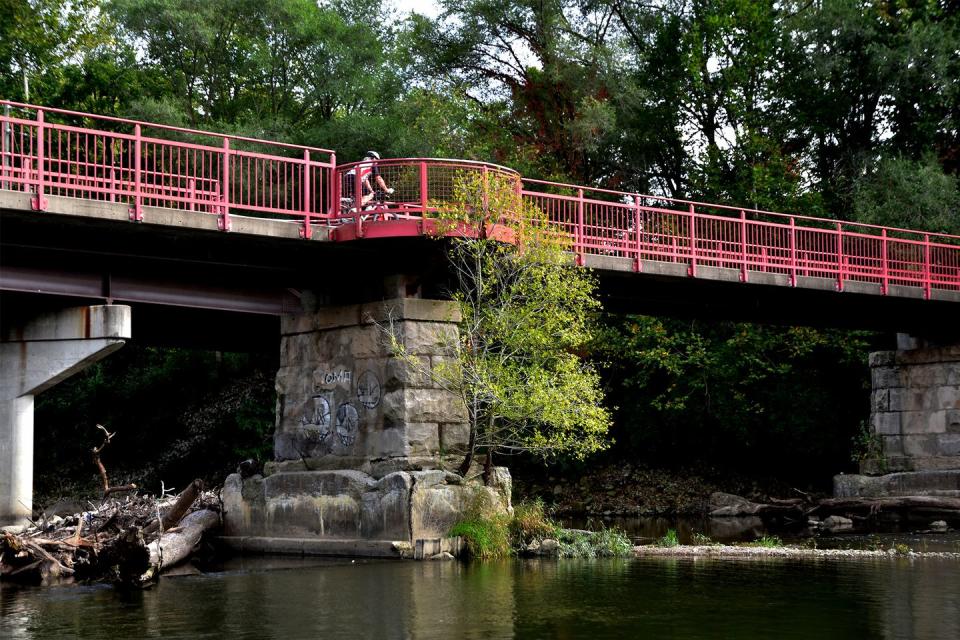
Far bigger than Cincinnati, an hour and forty-five minute drive away, Indiana’s capital has a surprisingly regal presence along its central corridor. Stripes of stately homes line the city’s north-south avenues from Monument Circle (the geographic center of the state) all the way up to Carmel, a neighboring township that has turned into a sizable city of its own. Swap your car for two wheels then bike the Monon Trail, a disused train track that has been lovingly reimagined as a recreational path. It winds its way between the neo-Gothic mansions and gingerbread tudors from the suburbs all the way downtown.
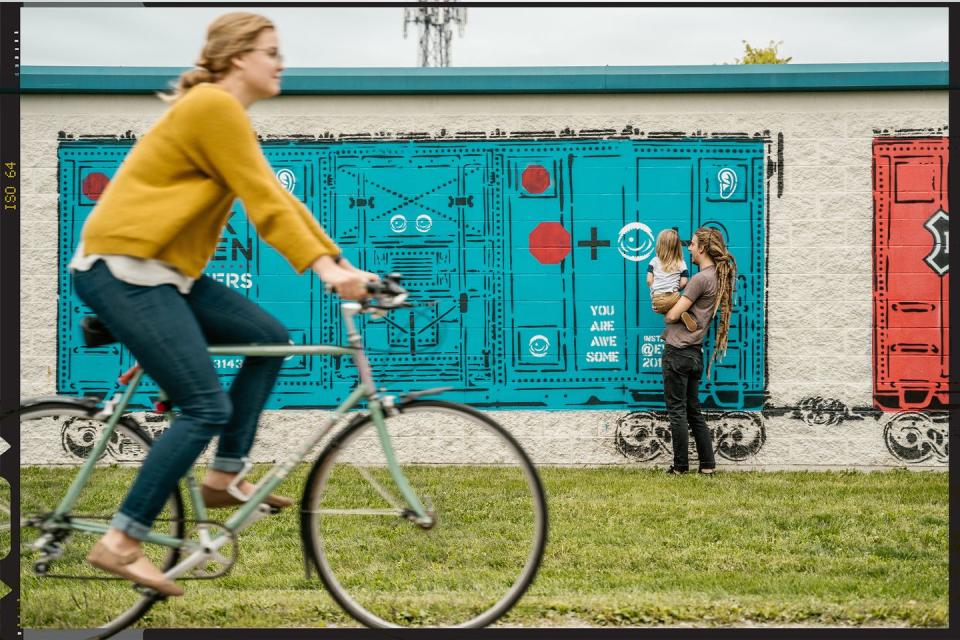
Fuel up at Eggshell Bistro in Carmel City Center where an international brunching menu satisfies regulars with everything from shakshuka and labneh to sweet potato hash. Further down the trail in the artsy Broad Ripple neighborhood, stop for lunch at Public Greens where six-time James Beard semifinalist Martha Hoover whips up delectable falafel salad bowls and “crispy birds” (fried chicken sandwich) with ingredients rigorously sourced from the area and profits going to stop food insecurity.
Don’t forget to stop at BRICS next door for a scoop of yellow cake ice cream before getting back on your bicycle to head downtown. There, you’ll find the perfect dinner and drinks combo: Parlor Public House and Vida, located on the same block. A warehouse refitted with thick coats of white paint and vintage leather couches, Parlor Public House is a cafe by day and cocktail bar by night where mixologists have perfected dangerously downable drinks using Kentucky bourbon and Japanese whisky. Over at Vida, the six-course prix menu showcases the chef’s predilection for adorning haute cuisine with little fried flourishes to keep things down to earth. Enjoy standouts like pork belly and seared tuna in mod, lodge-like surrounds.
03
Contemporary Art in Chicago, Illinois

Ask any design-inclined Chicagoan and they’ll all tell you that an architectural boat tour down the Chicago River is a must. The “Second City” ranks first in its maintenance of its turn-of-the-century towers, tributes to America’s progress at the tail end of the Industrial Revolution when steel and Art Deco flourishes first scraped the sky.
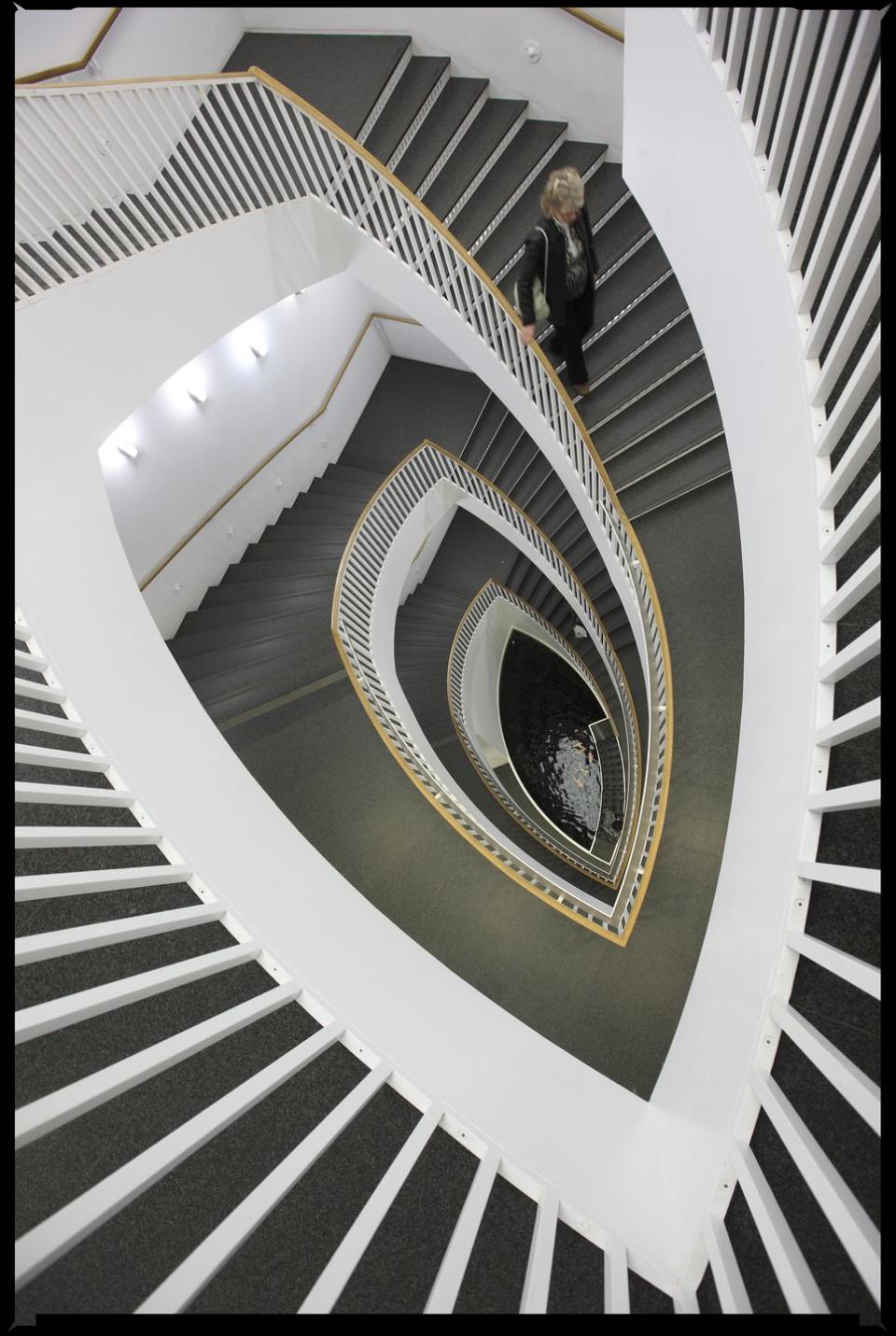
Beyond a century’s worth of architecture, Chicago’s contemporary art scene rivals New York’s; the MCA (Museum of Contemporary Art) is one of the world’s largest art museums and contains over 2000 works in its permanent collection. Stay next door at the newly renovated Ritz-Carlton Chicago, which partners with the museum—and bunch of other art-inclined spaces throughout the city—to provide exclusive access and guiding for guests. But you may never leave the hotel if you tack on its newer Club Lounge amenity, which doles out food and free-flowing drinks from breakfast all the way through to after-dinner dessert (only $200 extra per room).
04
The American Club Resort in Kohler, Wisconsin
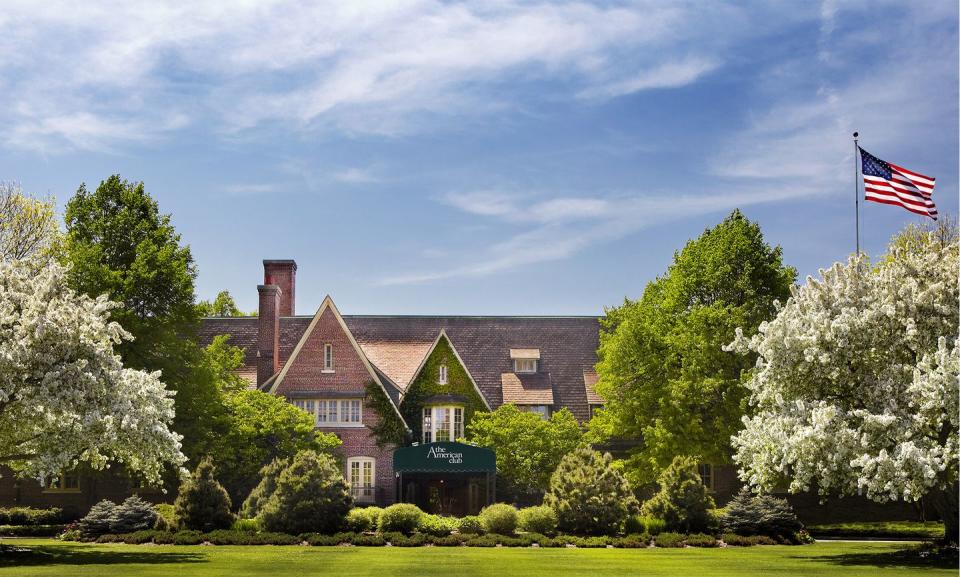
Slough off the city by driving north, following the shoreline of Lake Michigan until you cross over into Wisconsin. A couple of hours further north you'll find Kohler, a village founded in the 19th century by a German immigrant who made a fortune selling animal cleaning stalls to farmers. Today, his company has become a household name as one of the leading luxury faucet, bath, and shower makers in the country, and the dorm for factory workers at the old Kohler plant has been transformed into an opulent hotel, called the American Club Resort. True to its company name, the property—styled like a Bavarian mansion—has a state-of-the-art spa complete with wading pools, hot tubs and therapy rooms for water-centric treatments. A golf course and a smattering of restaurants now orbit the main facility, increasing the resort’s footprint all the way to the lakeside where two luxury cabins have been designed with privacy in mind.
05
The Apostle Islands in Bayfield, Wisconsin
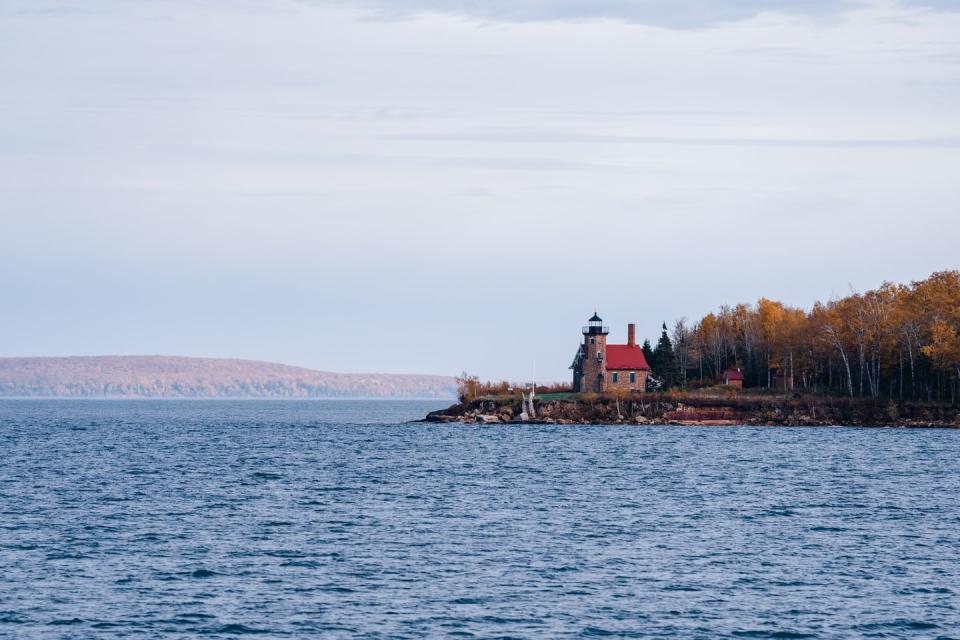
It’s a longer car ride—around five hours—from the western shores of Lake Michigan up to the hallowed coast of Lake Superior, North America’s largest body of freshwater, once known as the Inland Sea by the First Nations that made their homes along the water. In Bayfield, the Wild Rice Retreat welcomes travelers into their mod, Scandi-inspired cuboid cottages perched among the birches—some with fleeting views of the lake, others tucked deeply within the conifers. Guests can engage with the resort’s breadth of wellness activities from yoga to crafting, or simply use the site as a gateway to the hushed Apostle Islands, an archipelago that stretches out into the deep. It's the perfect place to strap on your hiking boots and stretch your legs, or kayak through the placid realm, where the only sound is your paddle dipping below the waves.
06
Traceable Farm Food in Minneapolis, Minnesota
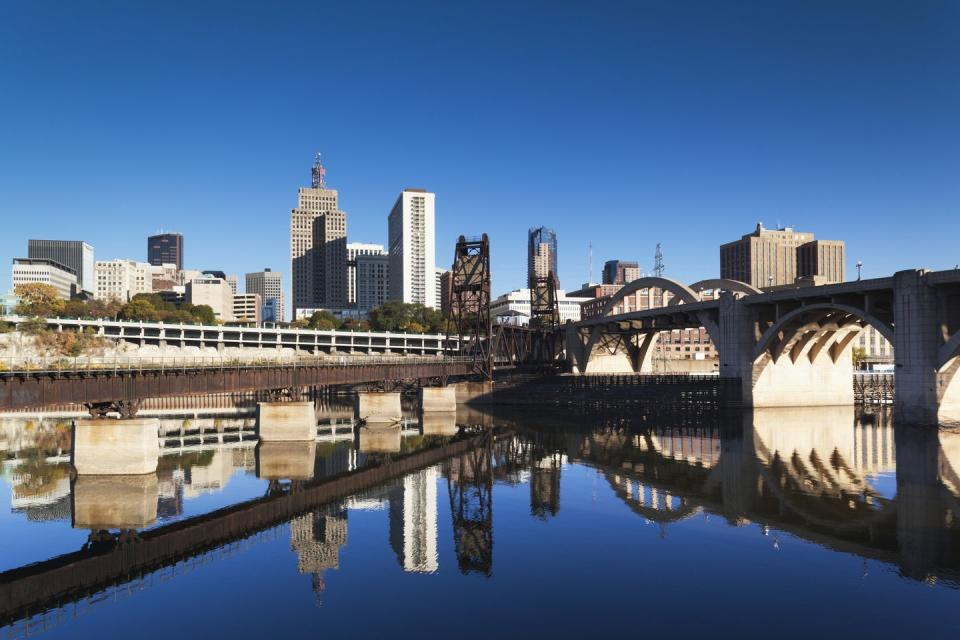
Driving away from the Great Lakes, America’s Midwest gets rebranded as “North.” Minnesota has long leaned into its Scandinavian roots. In recent years, however, a reckoning has begun to occur—especially among the dining scene—to showcase the multitude of nationalities that call the Twin Cities and its surroundings home, starting with its original inhabitants. At Owamni, patrons feast on “de-colonized” meals—ingredients cultivated and celebrated before the arrival of Europeans—prepared by an eclectic team of Dakota, Lakota, Cheyenne, and Navajo.
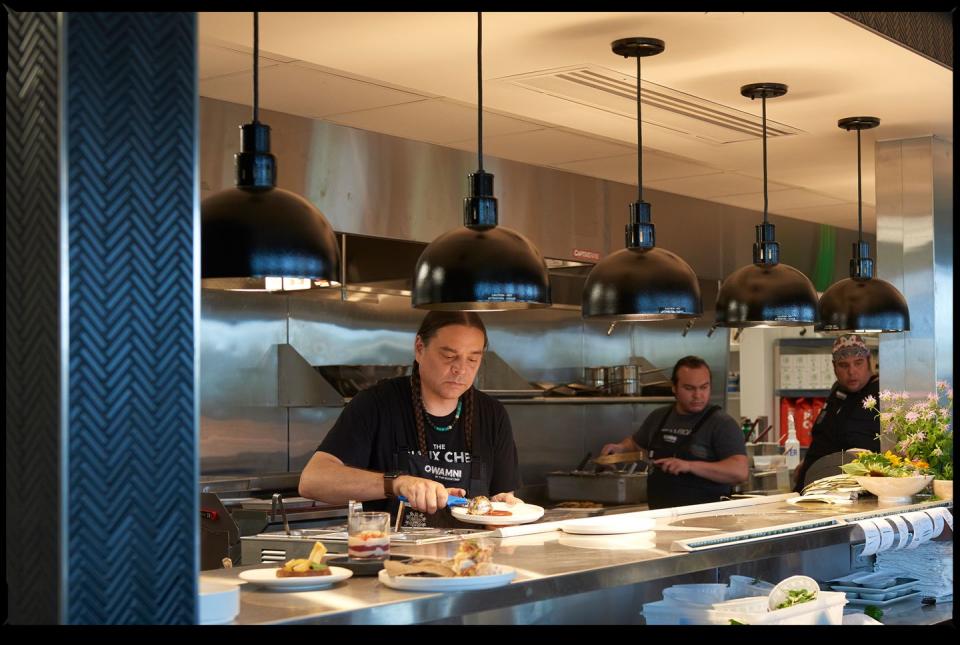
Downtown, at Farmers Kitchen + Bar, guests will find one of the only restaurants in the nation that puts a direct line between the dinner plate and the fields and pastures; the enterprise is owned wholly by the Minnesota Farmer’s Union. And when the new Four Seasons opens in 2022, travelers will get to enjoy the seasonal harvest as Gavin Kaysen—a James Beard award winner and arguably the Twin Cities’ most celebrated chef—opens his newest dining concept which will continue to match his affinity for French method meal prep with local ingredients.
You Might Also Like

